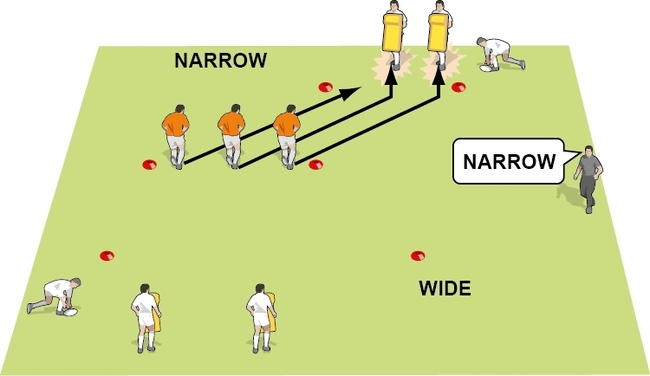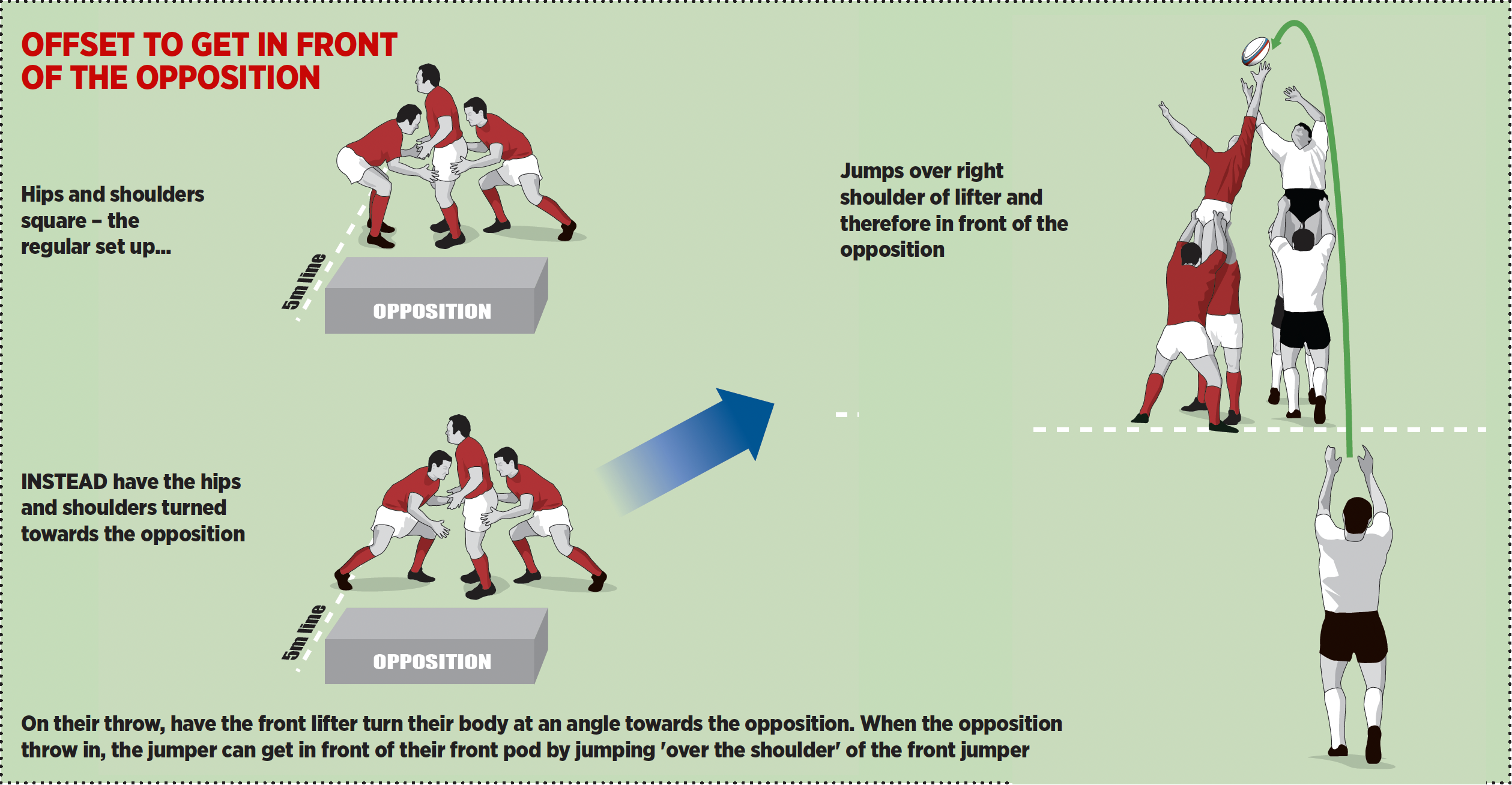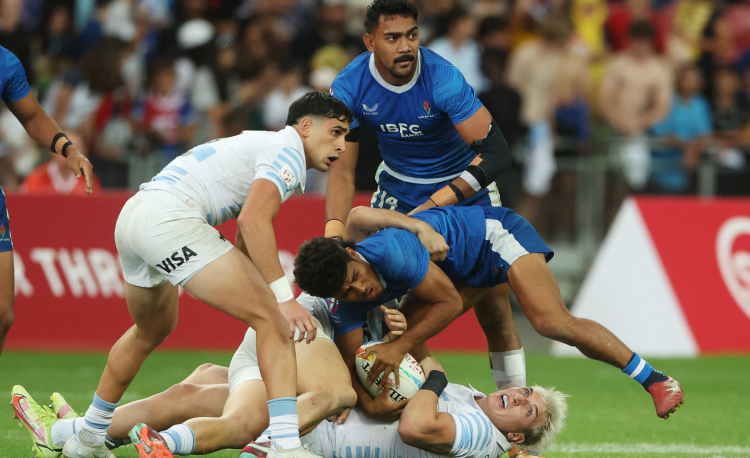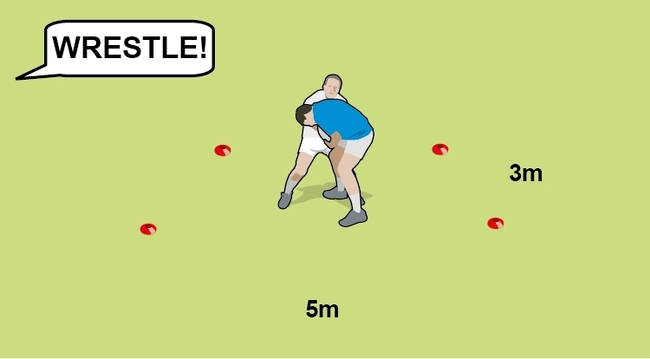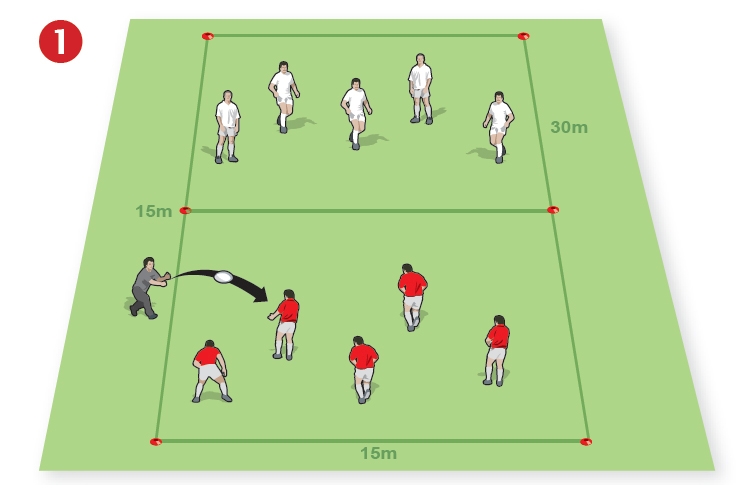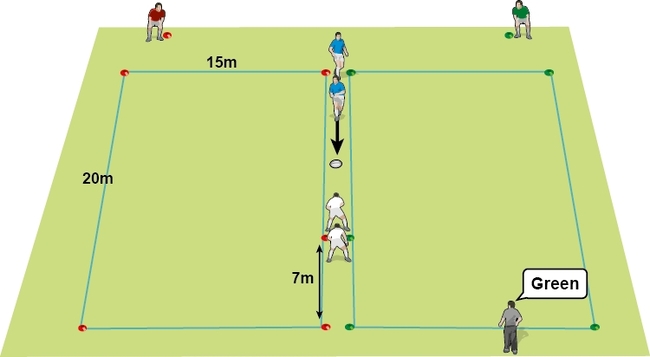Touch rugby to teach players defence

Improve your touch rugby games in training to develop some of the key principles to make your players better defenders. Here are some ideas to change the way you set up and play.
Touch rugby is a convenient way to get players working at their “heads-up” rugby and handling skills, as well as practising new moves and ideas.
- It reduces contact, allowing longer training periods to practise skills.
- Can be adjusted to increase the levels of conditioning to improve fitness.
However, touch-tackling comes with issues:
- What constitutes a touch-tackle?
- What skills training elements does it aid?
Too often touch tackles are accepted as some hands somewhere on a body. But in a contact game, it’s rare for a one-handed attempt to stop a runner, let alone bring them to the ground, and similarly, an attempt to tackle too high may see the tackle brushed off.
Yet, in games of touch, we see very light “touches” often counted as tackles, halting progress. This doesn’t replicate the full contact game in any way, and too easily negates what was actually good attacking play.
TOUCH TACKLING MORE LIKE THE GAME
So what should a touch tackle look like to make it more game-like?
The answer will depend of course on what the outcomes of any session are, particularly with regards to attack.
For example, if the idea is indeed to have no possible defensive contact at all, a one-handed touch may be considered quite suitable. However, in most circumstances, we should seek to replicate some basic characteristics of a full tackle: good footwork to get close to the ball carrier and enough contact to show that the tackler would have been able to complete a tackle.
Whatever the rules, it’s key that these are properly controlled. Referee touch harshly.
We need to concentrate hard to maximise the benefits of the game and it’s our input in this sense that makes the most difference. Therefore, instead of wearing a coaching hat and calling in with praise, we should just be penalising poor play or rewarding good technique with our refereeing decisions.
Finally, remember that touch rugby can be quite rough if you want it to be. Though the players aren’t going to be smashing into each other, they can still bump, push and grab if you want them to.
HARD RULES
Here are some ideas to work with:
Two arms or two hands
It’s unfeasible to ask players to wrap two arms around an attacker in touch. But they can be expected to place two hands fully on an attacker. Two palms pressed against the attacker is a sign that the tackler has got close enough in order to use two arms.
Picking a target and getting low
Insist on a double-handed touch below the waist. This requires the tackler to move towards a low full-tackle position.
These two rules can be used with all age groups and abilities. They work well with younger players and those new to the game as they concentrate on classical techniques to form an effective standard tackle.
They can also be used to concentrate on particular tackles as well. You could insist on two hands on one thigh if the session aim was the side-on tackle. Players would have to get to the side of the runner.
Front up
To improve front-up tackling, you need to think about the body position of the tackler. They have to be in front of the ball carrier.
Therefore ask tacklers to use two hands on a chest. This doesn’t of course put a player in a low position, but it does get the defender square on to the attacker which is where, when using full contact front tackles, the tackler will have to be.
This also forces defenders to understand their overall defensive positioning. It creates good spaces for hard runners to attack immediately on the shoulder of the ball carrier, leading to other defenders having to watch their areas of defence to protect the edges of a tackle. Touch-rugby teach players defence
TOP TOUCH-TACKLE TIPS
- Referee hard. Don’t allow poor technique to succeed.
- Make the “touch” meaningful - a specific type of touch to work on a specific skillset.
Newsletter Sign Up
Coaches Testimonials

Gerald Kearney, Downtown Las Vegas Soccer Club

Paul Butler, Florida, USA

Rick Shields, Springboro, USA

Tony Green, Pierrefonds Titans, Quebec, Canada
Subscribe Today
Be a more effective, more successful rugby coach
In a recent survey 89% of subscribers said Rugby Coach Weekly makes them more confident, 91% said Rugby Coach Weekly makes them a more effective coach and 93% said Rugby Coach Weekly makes them more inspired.
Get Weekly Inspiration
All the latest techniques and approaches
Rugby Coach Weekly offers proven and easy to use rugby drills, coaching sessions, practice plans, small-sided games, warm-ups, training tips and advice.
We've been at the cutting edge of rugby coaching since we launched in 2005, creating resources for the grassroots youth coach, following best practice from around the world and insights from the professional game.




